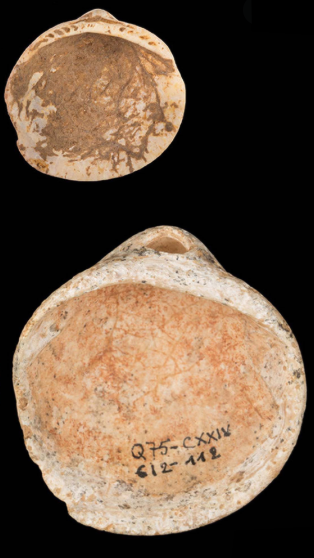Pipe provides shell haul
 A water pipe dig has revealed a ‘treasure trove’ of ancient fossils.
A water pipe dig has revealed a ‘treasure trove’ of ancient fossils.
Following an excavation beneath Auckland's Mangere Wastewater Treatment Plant in 2020, an astonishing array of fossils has come to light.
The findings, which include the world's oldest known flax snails, the spine of an extinct sawshark, and great white shark teeth, have surprised even the scientists that found them.
A recent scientific paper, published in the New Zealand Journal of Geology and Geophysics, describes these discoveries as one of the most diverse assemblages of three-million-year-old fauna ever unearthed in New Zealand.
Additionally, researchers anticipate naming and describing at least ten new species in subsequent studies.
The unexpected treasure trove of fossils emerged during Auckland's Watercare project to upgrade critical sewage pipelines in 2020.
As excavations for two massive vertical shafts progressed, workers inadvertently dug through an ancient shell bed. Auckland-based palaeontologist Bruce Hayward compared this discovery to “finding gold right on your doorstep”.
Recognising the historical significance of the find, Watercare and their contractors eagerly cooperated, depositing a substantial mound of shelly sand in a nearby paddock.
This allowed palaeontologists to painstakingly sift through the material over many months.
Watercare also funded two graduate students in palaeontology, working under the guidance of Dr Wilma Blom, a curator at the Auckland Museum, to meticulously examine over 300,000 fossils.
Several thousand of these fossils now reside in the museum as a testament to this extraordinary “once-in-a-lifetime find”.
“Detailed identification of the fossils shows that they were deposited between 3 and 3.7 million years ago in a subtidal channel in an early version of the modern Manukau Harbour,” says researcher Dr Bruce Hayward.
He further explained that during this era, sea levels were slightly higher than they are today, and global temperatures were notably warmer. Consequently, the fossil collection includes various subtropical species whose modern-day relatives inhabit the warmer waters near the Kermadec and Norfolk Islands.
Notably, among the fossils are at least ten previously undiscovered species awaiting formal naming and description.
In their recent scientific publication, five authors documented a staggering 266 distinct fossil species.
This assemblage represents the richest and most diverse fauna from this period ever uncovered in New Zealand.
Dr Hayward, the lead author, expressed his surprise at the variety of environments represented in the fossil record, saying; “What is surprising is that the fauna contains fossils that lived in many different environments that have been brought together in the ancient marine channel by wave action and strong tidal currents”.
The collection includes ten specimens of the iconic New Zealand flax snail, believed to have once inhabited the nearby land and been washed into the sea by storm runoff.
These flax snails are now recognised as the oldest of their kind globally.
Most of the fossils are believed to have thrived on the seafloor, in brackish estuaries, attached to rocky shorelines, or were carried in from the offshore regions of the exposed west coast during that era.
Noteworthy discoveries within this fossil cache encompass isolated baleen whale vertebrae, a broken sperm whale tooth, the spine of an extinct sawshark, dental plates of eagle rays, and numerous great white shark teeth.
The groundbreaking work is dedicated to Dr Alan Beu, New Zealand's preeminent expert in molluscan fossils, who was actively involved in the research until his passing earlier this year.








 Print
Print